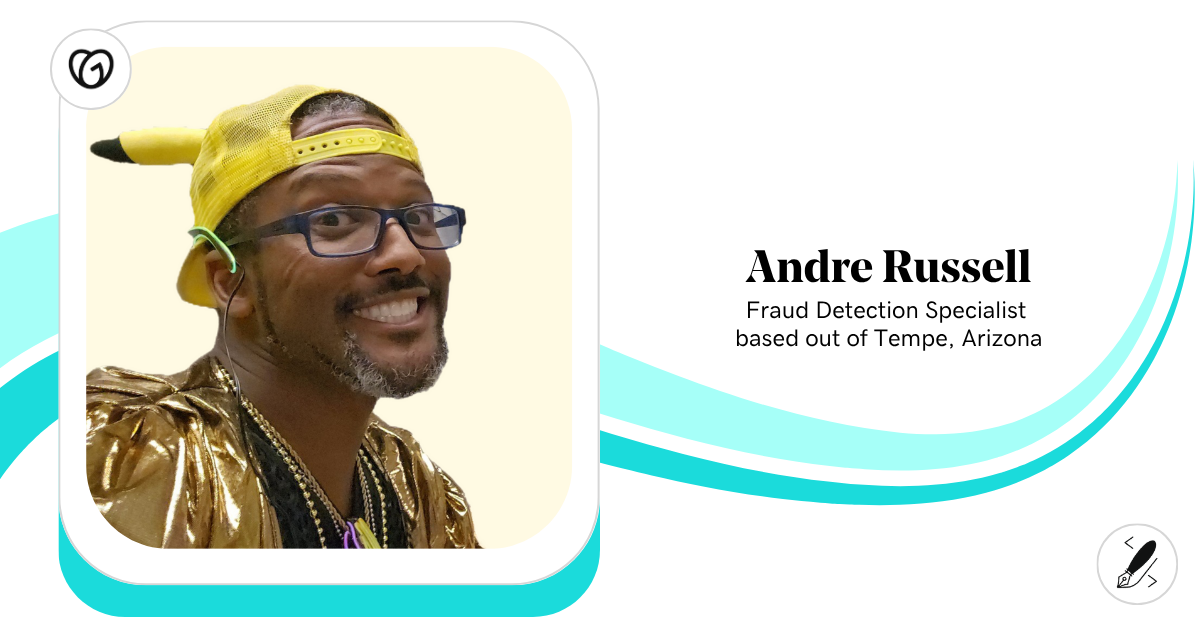Getting started in the world of freelance web development is not an easy task.
In addition to solid technical knowledge, you’re on the hook to constantly keep up with the latest tools and methods, as well as to persuade prospective clients that you have the necessary skills and abilities to deliver the results they demand.
Fortunately, a part-time side hustle as a freelance web developer can provide an excellent opportunity to gradually get some experience before making a full-time commitment.
How to start your freelance web developer career
This guide will cover everything you need to know if you’re considering taking the leap into freelance web development, including:
- Step 1: Have a plan
- Step 2: Lay the groundwork with systems and processes
- Step 3: Deal with the legal formalities
- Step 4: Establish a financial system
- Step 5: Craft a brand that can be found
- Step 6: Find your niche
- Step 7: Identify preferred solutions you can recommend to clients
- Step 8: Build a strong web developer portfolio
- Step 9: Learn how to communicate with clients
- Step 10: Create a sales and marketing strategy
- Step 11: Envision a transition strategy
Ready to get started? Let’s dive in.
Benefits of being a freelance web developer
For web developers and designers willing to hustle, there are many benefits to going the freelance route.
Flexibility in when and how you do the work — or not
As a freelancer, you set the rules regarding working hours, and who you’re willing to work with.
Whether you’re an early bird who rises with the sun, or a night owl who’d rather work efficiently when everyone else is sleeping, freelancing can be a great solution for you.
Bonus: You can work remotely — whether from home, your local coffee shop or your beach vacation.
If a potential client or volunteer project demands unreasonable hours or deliverables, you’re well within your rights to politely decline, then move on to find work that fits your requirements and expectations.

Opportunity for more interesting projects
In the freelance world, there is no shortage of variety — in terms of both clients and projects.
Every project brings with it the chance to learn new technical skills, to increase understanding of a particular market space, or just to practice your interpersonal skills dealing with clients.
Over the years I’ve loved gaining conversational knowledge about many new topics. Twenty years ago, I had no idea someone could make money as a professional organizer or mobile dog groomer. There are even folks who clean up the yards of foreclosed houses.
I’ve learned about soapmaking, theatre auditions, specialty quilting and more. In turn, being knowledgeable about a variety of subjects has led to new opportunities.
High demand for the work, boosted by a shortage of qualified workers
Web-related skills are in demand in just about every industry, with a predicted shortage of web developers. According to the U.S. Bureau of Labor Statistics, the web development field is expected to grow by 15% by 2026.
A side hustle doing some part-time web development work as a freelancer may give you a head start in building a resume to fill one of these jobs.
The chance to make good money
With the right mix of skills and projects, you’ve got a real opportunity to make good money. Although the amount you can expect to make as a freelance web developer or designer will vary based upon factors like your experience level and the amount of time you commit to your freelance business, the average web developer salary in the U.S. is about $75,000.
By developing yourself into a subject matter expert, you’ll see additional opportunities pop up — via casual conversation in a store or at the post office and formal referrals from other folks who’ve experienced your good work.
Of course, you’ll also be competing with freelance web developers in other areas of the world who may be willing to do the same job at a lower price. Since price should not be the only decision-making factor, you’ll benefit from that problem-solver reputation, as well as other proactive and responsive behaviors.
Related: Becoming a full-time freelancer — 3 tips for web developers
Do you have what it takes to become a successful freelance web developer?
No single path is right for everyone.
While freelancing offers more choices, it also comes with more responsibilities. There are many tasks and demands you never see when you’re working for someone else.
Consider who you are, as well as your current needs and goals, before deciding if you want to take on the challenges of freelancing.
Skill alone isn’t enough to create a successful business, but if you’re willing and able to take on these new responsibilities, you’ll have the opportunity to shape your own future.
Do you have the technical chops, and a plan to continue learning?
Web development projects require knowledge of more than one programming language. The more technologies and languages you know, the more jobs you’ll be ready to accept.
To prioritize, start with languages that are both versatile and in-demand and continue building your experience with more technologies over time.
If you’re already employed full-time in a web-related profession, perhaps you’ve become bored, need more of a challenge, or are just looking for ways to build new skills on your terms. There are many online resources available.
Consider improving your skills in any of the following areas:
- The basics of HTML, CSS and JavaScript
- Intermediate and advanced WordPress
- The basics of user experience (UX) and user interface design
- SQL and PHP
- Search engine optimization
- Responsive design
Related: 20 web design books recommended by the pros
Staying current in an ever-changing field
Stay competitive by making an up-front commitment to personal development and ongoing education, whether formal classes, online tutorials, attending conferences, or working toward additional certifications.
Without ongoing effort to push and accelerate your learning, you’ll be left behind by other more motivated freelancers anxious to find work.
Your goal is to avoid becoming outdated as a developer while continually expanding your knowledge (and therefore your client base).
Additional learning opportunities include reading newsletters, publications and blogs, and attending WordCamp or similar events.
The inevitability of handling the business side
Running a business has its own challenges.
There’s a lot to remember, so much to organize, and responsibilities far beyond creating the product. You can find help (accountants, billing software, etc.), but you will still have non-project work on your end.
So you must ask yourself: Can you handle the business side, and are you willing to do so?
Nothing can ruin a future faster than running a business poorly.
The highest risks might be legal issues, which can occur at any stage of the game. Poorly handled taxes can result in audits and large bills.
And it all comes down to you: you’re the decision-maker and the budget-approver. In addition, you’re the marketing department, IT tech support, and the one who stocks the office supplies shelf.
Related: Do you have what it takes to be your own boss?
Do you have the soft skills to deal with a variety of situations and personalities?
Being poorly organized is a sure way to ruin your freelancing gig. Both you and clients will end up angry and frustrated, and clients can feel cheated because projects aren’t delivered as promised.
If you aren’t diligent about invoices, payments won’t come your way. Without organization, you end up working all the time to make up for the distractions that have crowded into your day.
If all you want to do is create, then freelancing may not be for you, because client interactions are crucial to your success.
Make no mistake, clients can sometimes be a hassle. They have wants. They have needs. They often require hand-holding and speak a language all their own. And you’re the boss, so there’s no one else to manage them.
Related: The 17 types of clients that every web designer deals with
Can you rely on related experience to help in connecting with clients?
It sounds attractive to take on side hustle gigs fresh out of college, while getting up to speed on your first full-time job.
However, you’ll do much better at this if you already have some real experience in business or an organization (whether a club, nonprofit or professional organization).
The experience of working for someone else, making and meeting commitments, and learning to work with all sorts of people will make a huge difference in your success — and involvement in these groups may lead to referrals.
11 steps to becoming a freelance web developer
When you’ve determined that you’ve got what it takes to become a freelance web developer or web designer, it’s time to outline your to-do items to make it happen.
Step 1: Have a plan
Even if this is a part-time gig, you want to have a plan in place for an eventual transition to making it a full-time freelancing position. You want a business plan that will:
- Define your business vision and identity.
- Set financial goals and targets.
- Estimate expected expenses and income.
- Define your ideal clients.
You don’t need to start from scratch; here are five great business plan templates.
Make sure you’ve got a solid plan that will generate enough income to maintain your desired lifestyle, while building a cushion. Living hand-to-mouth for any extended period of time will get old really fast.
Can you identify your unique selling proposition?
Your unique selling proposition, or USP, helps you stand out from the crowd, establish yourself as the solution of choice, and gain trust and respect.
Even as a newbie, you need to be able to articulate why you’re a good choice.
What is it that you provide that puts you ahead of other freelancers looking for side work? Is it technical skills or knowledge? Delivery speed and/or quality? Your customer service skills?
Even as a newbie in the freelance world, you need to be able to articulate why you’re a good choice. You need to communicate to your target audience what you stand for, what sets you apart, and what makes you the best option.
Have you scoped out the competition?

Competition is a fact of life in the freelancing realm.
There will always be folks out there who do what you do, possibly at an equal level of capability. They may charge more (or less), they may have more (or less) experience, and they may have a larger (or smaller) network.
But whatever they have, it’s important to know how you compare.
That means constantly keeping your eye on the others in your area who are doing what you want to do. Find out what they charge, how they get work, who’s featured in their portfolio.
If you’re focusing on local work, you really need to know who all of the other local players are.
There’s probably enough work to go around, but you want to nab the best projects when possible. So much of it may be happenstance, in terms of meeting the right person, or someone you know meeting someone who needs work done.
You want to figure out how you can immediately differentiate yourself. Your goal is to deliver work of better quality and performance than what the other folks are selling.
Related: How to find inspiration from your competitors (without stealing their ideas)
Step 2: Lay the groundwork with systems and processes
While you still have your traditional job paying your bills, set aside time to create systems and processes for everything you can in your web development or design business.
This includes scheduling meetings and appointments, as well as doing the work, and spending time on marketing and sales.
Systems and processes reduce stress, improve productivity, and increase profitability.
There are many software options available to help streamline, simplify and automate parts of your business. Eventually, you’ll want to have software for:
- Accounting and invoicing
- Project management
- Email marketing
- Time tracking
- Web design and development
But be careful — don’t get too caught up in unnecessary expenses too early in your new venture. Remember, making money — enough to cover all of your bills and income — is just as much about controlling expenses as it is about making sales.
The demand for organizational skills and self-discipline
Freelancers may feel frequent pressure, trying to finish the current project while simultaneously working on the next, and investing in business development for the future. And with a part-time side venture, of course, your current job should take precedence.
Balancing work, clients and personal life will be challenging, so it helps to build a supportive community of family and friends willing to work with you, with flexibility and understanding.
Freelancing takes significant self discipline to avoid distraction. Hold yourself accountable, stay motivated and seize opportunities.
Freelancing takes significant self-discipline to avoid distraction. It’s time to hold yourself accountable, stay motivated, and take advantage of every opportunity … all while avoiding the temptation to check Facebook or open the fridge door every 20 minutes.
Related: 11 tips to meet deadlines in your freelance business
Step 3: Deal with the legal formalities
Even for a side hustle, it makes sense to have a separate business name and entity.
While you’re working for free, this may not seem important, but the minute you have paying clients, you’ll want to have it covered.
Decide if you’ll operate as a sole proprietor, LLC or corporation. Consider engaging a lawyer to help you with the necessary paperwork and/or using an online service such as LegalZoom.
You’ll also want to check your city government website to determine local requirements for business licensing, permits and fictitious name or DBA (“Doing Business As”) registration.
Get familiar with the basics of taxes for freelancers.
If you’ve come this far, taking the above steps to protect your company, have your clients sign a contract for work.
Lawyers can also help you create a boilerplate contract. Ask around your community, or even an online community you trust, to find a lawyer who understands development contracts. All the same reasons for getting a tax preparer or LLC lawyer apply.
Related: How to create a web design contract
Step 4: Establish a financial system

If you use your personal bank account with your business then the line between personal and business finances gets blurred, and you could easily lose any tax advantage or legal protection a formal business entity provides. So before you jump into paid work, check with your current bank, but also shop around, comparing fees and perks.
A business bank account can:
- Allow you to have a debit or credit card just for business.
- Help make tax preparation much simpler.
- Provide perks and rewards to make your bills smaller.
- Protect your personal finances if your business “identity” gets stolen (and vice versa).
Set up a payroll system with your new business bank account.
There are services that can help with this, or you can do it manually. This means taxes will be taken out properly, just like having a “real” job.
Since your goal is to have the business generate more money than you need to be paid each month, your business bank account becomes the place to build up a reserve.
Need a new laptop? Anxious to attend a conference? Have your business pay for it, for a greater tax advantage. Remember, business taxes are different.
Related: Tax tips for your side hustle
The reality of financial constraints
Freelancing income can arrive at unpredictable times, with income varying month-to-month, based on the projects you take on and what they demand.
One of the biggest struggles in the move to freelancing is the income flow.
This is a non-issue while you’re still doing pro bono portfolio-building work. But as soon as you’re relying on income, the stress that comes with waiting on payment can potentially ruin your freelance experience.
Questions to keep in mind:
- How much steady income do you require? Consider paying rent, kids’ tuition, settling any extra debt you’ve acquired, and the basic costs of survival: food, utilities, entertainment, etc. Figure out exactly how much money you need to live and what your freelance hourly rate must be.
- Can you amass three to six months’ of savings to cover living expenses, before depending solely on freelance income?
- Can you put enough aside in savings to eventually fund growth and expansion of your business?
- Will the uncertainty of unpredictable income cause too much stress or anxiety?
- Do you have alternate ways to cover the benefits of your full-time job, such as health insurance? If you have concerns over health issues or a young growing family, it may be better to stay with your current job and continue web development as a long-term side hustle for fun, career growth and extra income.
Related: 8 freelance financial mistakes that many new solopreneurs make
Step 5: Craft a brand that can be found
Getting your name out there may not sound like as much fun as working on actual websites, but it’s a make-or-break activity.
If potential clients don’t know who you are, they won’t be asking for work.
We’ve already talked about showcasing your work, sharing expertise, finding ways to connect with like-minded folks, and building your network, one contact at a time. The more you’re visible, the more people you’ll talk to.
Whether you’re using your own name or a business name, just get your personal brand out there:
- Acquire the right domain name.
- Snag relevant social media handles, and start posting — but keep in mind: quality over quantity!
- Create online tutorials that can be shared on YouTube or elsewhere.
- Think about Quora, which can also help foster relationships with others.
- Offer short, free presentations at local venues, such as your public library or networking groups.
As a freelancer, while you may believe you’re selling a particular service, you’re actually selling yourself, and the experience of working with you to get that particular service delivered.
There are other freelance web developers out there — the key is differentiating your service from theirs, but delivering a superior experience.
If you're having a tough time coming up with a distinct brand name, try our business name generator for some fresh ideas (go ahead - check out the naming tool now!).
Related: 5 steps to build a personal brand
Step 6: Find your niche
Don’t try to be all things to all people.
Finding a target audience and focusing your skills will enhance your productivity, improve your skills in a relevant way, and help you be known as an expert in a specific market space. That means making tough decisions early on:
- Are there platforms you’d rather not work on?
- Are there specific types of projects or websites you’d rather not go after?
- Are you looking to stay local with your clients, or are you willing to do long-distance work, with people you’ll probably never meet in person?
It’s great if you’re known around town as “that gal who builds websites.” But it’s even better to be known as “that easy-to-work-with expert problem-solver who builds websites.”
It’s easier to advertise your services if you can highlight your expertise or approach in a particular area, hopefully one without much competition.
Once you’ve figured out your target audience, you’ll want to answer these questions:
- What is this audience’s most significant challenge?
- What problems are they trying to solve?
- What problems are causing them the most pain?
- What are their business goals?
- Where do they get their information when in search of answers?
- What are they reading or listening to?
Related: What information should you include in your buyer persona customer profile?
Step 7: Identify preferred solutions you can recommend to clients
Establish yourself as a reliable resource by having a ready set of tools you can recommend to clients, starting with:
- Domain registration
- Website hosting
- Web security solutions such as SSLs
Team up with a vendor providing a variety of options in each category, with strong 24/7 technical support.
Established web professionals have their favorite vendors, and expertise on their offerings leads to improved productivity.
As someone new to the field, a great tech support resource is the ace up your sleeve when you come up against something you can’t handle.
Editor’s note: Check out GoDaddy Pro for a wealth of free tools to help you manage your clients and websites.
Step 8: Build a strong web developer portfolio
We’ve already discussed the fact that an online portfolio showcasing your work is a requirement for getting more work. Potential clients want proof that you’ve done this before, that your work is appealing to them, and that you’re someone to be trusted.
Keep in mind, you’re under no obligation to disclose how much (or whether) you were paid for the work. You’ll be judged solely based on the quality of your work.
For more complex projects, consider creating case studies that briefly explain your process and the results. If you have a blog, you’ll be able to discuss innovative aspects of highlighted projects.
Make the most of your free work. It’s good for business, and you can avoid frustration by only choosing initial projects that you enjoy, for organizations or groups you support.
And of course, always request testimonials from those for whom you are volunteering — most will happily provide them.
Related: How to ask for testimonials and reviews from your clients
The challenge of identifying and completing portfolio-building work
Until you can provide a convincing portfolio and at least a few clients who are willing to recommend you, you won’t make much money — if any at all.
Therefore, it’s a reasonable approach to gradually ease your way into the industry, rather than dive head-long into full-time work.
A gradual professional path could start with some personal projects, including volunteering for social, cultural, political, public service and other organizations or causes, plus a handful of side jobs.
In the beginning, focus on free work to build your portfolio by identifying those who can benefit from your efforts:
- Do you know any local small businesses that don’t yet have an online presence?
- Are you volunteering for any local nonprofit organizations or community causes whose websites may be ineffective (or nonexistent)?
- Do you have expertise in a particular market that doesn’t necessarily focus on their online presence?
My very first pro bono websites included my children’s elementary school (the first in a district of more than 40 schools to have a website), a nonprofit where I was on the board of directors, and my father-in-law’s manufacturing business (and in those days, machine shops were not usually found online). And all were identified because I saw the need and volunteered.
If you frequent some regular local businesses, one approach might be to review their websites, and then the next time you’re in there, offer a suggestion. Say “I was wondering if I could make a suggestion to improve your website?” Of course, offer it for free, but see where it leads, and if they take you up on your idea, there may be more work to follow.
Related: 20 examples of inspiring web design portfolios
Step 9: Learn how to communicate with clients
The relationship between the freelancer and their client is a delicate balance.
On the one hand, you want them to feel like “the customer is always right.” On the other hand, they are counting on you to provide knowledge, training and expertise that they don’t have — and should recognize and acknowledge that they don’t have.
You need to school your clients gently, without making them feel inadequate or stupid.
You’d like to clearly articulate expectations so that no one is surprised, offended or defensive.
Related: How to set expectations with your clients
Secret weapon No. 1: Reliability
If you’re serious about making money as a freelance web designer, treat your business, yourself and your customers with respect by providing excellent service and getting back to them in a timely manner. Customers deserve someone who can promptly answer emails, deliver work on time, and lead them through a productive experience. You can be that someone by treating your freelance gig as a real business from the beginning.
Secret weapon No. 2: Communication
In today’s crazy world entrenched in a multitude of communication channels — phone, email, texting, instant messaging and more — effective interaction skills are often overlooked.
Exceptional communication skills serve everyone, no matter their profession, and no matter what type of clients they support. My approach to providing excellent customer service depends on a trio of communication principles:
- Speak with precision
- Listen with forgiveness
- Ask with intention
Even with the best intentions, schedules change, delays appear, project scope creeps. If something unforeseen prevents you from meeting a commitment, communicate why to keep everyone in the loop.
Related: Communicating with clients — 5 tactics for success
Get over your fear of asking for money
While building your portfolio via free work, you can avoid uncomfortable conversations about money, but you can’t work for free forever. That means learning how to develop an estimate, write a proposal, and negotiate a fee.
In the beginning, you may regret low estimates that leave money on the table. Conversely, you’ll occasionally fear that a high estimate will drive potential clients away.
View rejection as an opportunity to practice negotiating.
After you have enough experience, your work has value, and you deserve compensation. Finding ideal pricing that treats both you and your client fairly will be an iterative exercise.
Related: Managing client expectations so you get paid on time
Additional resources for working with clients
Working with clients as a freelance web developer or designer is an art and skill that you will refine over time. These resources can help you be more successful:
- How to create a client management system
- 9-step web development project checklist
- How successful clients build successful businesses
- 3 customer service and communication principles for web designers and developers
- 10 customer service rules every web professional should follow
- Difficult clients and how to manage them

Step 10: Create a sales and marketing strategy
Once you’ve got some portfolio work under your belt, you’re ready to move on to paying side jobs.
By establishing a small professional network, building up a convincing portfolio, acquiring a few complementary testimonials and a solid knowledge of the industry, you’re ready to go when paying work opportunities appear.
Possible avenues to paying work include networking, attending meetings, WordCamps or local conferences, and joining freelancing sites such as Upwork, Freelancer and 99designs.
Related: How to turn contacts into referral sources and lead generating machines
Being comfortable with putting yourself out there to land work
Let’s get one thing straight: if people don’t know you exist, they won’t hire you, buy from you, learn from you, or refer business to you.
Keeping that in mind, you need to cultivate a world where as many people as possible know, like and trust you. They need to know what you do, who you serve, the results you’re capable of helping others achieve and why you’re different than the competition.
Treat networking as an investment in your brand awareness.
When the day comes to level up your web design or development side hustle and turn it into a full-time business, you’ll have a strong, established network of supporters, ready to help elevate you to the next level through referrals.
Put these things on your networking to-do list:
- Find local networking groups your ideal client attends.
- Join local web design and development networking groups.
- Check out the local Chamber of Commerce.
- Join online networking groups.
- Join regional or national networking organizations with seminars, conferences and workshops.
- Attend networking events regularly and begin building quality relationships.
- Spread the word that you’re available, by contacting family, friends and anyone else who just might have a contact for you.
I find the Chamber of Commerce or neighborhood business organizations to be great because members are all legitimate business owners, although they may charge a membership fee.
Volunteer or join a committee, and remember to follow up with the folks you meet. If you’re using a newsletter to build your marketing network, ask if you can add them to your list. Some Chamber groups invite members to give presentations so that could be another opportunity for you.
Try to work your side hustle into any conversation.
If you meet someone new and get into a conversation, ask them what they do. Let them talk first, and eventually, they will ask what you do. And there’s your golden opportunity to say “I’m working full-time, but have this side hustle going where I’m building websites, as that’s where my passion lies.”
Don’t be afraid to strike up conversations wherever you are: in a waiting room, gym or coffee shop. I’ve received job referrals from people I met in those venues, thanks to my willingness to spark a conversation.
Related: How to attract customers when you’re just getting started
Step 11: Envision a transition strategy
Once you’ve secured a few paying jobs and can gauge how much time you’re able to commit to this work, you can think about leaving your day job to pursue more freelance work.
While you don’t want to quit your day job before your freelance work can provide a living, you also don’t want to wait too long — risking burnout or having to turn away freelance opportunities due to bandwidth constraints.
Leaving your primary job before going full-time freelancer is not without its risks, and will depend on your personal circumstances, support system and finances.
Don’t decide the “right time” based only on how much money you’ll immediately make.
Once you’re not working an outside job, you’ll have more time to work on your business, building a path to increased income.
Related: How to tell you’re ready to start your own business
Tips for survival along the way as a freelance web developer
Embarking on a freelance career takes guts — but the rewards can be well worth the risk. Keep these tips in mind on your entrepreneurial journey.
Be intentional in crafting a vision
Set realistic goals and stick to them. With so many options in the web industry, you want to focus on a subset of all possible work.
You want to have an overall understanding of the industry, your chosen client base and what type of work they need.
Once you know where you want to focus, check out the work of others in your chosen specialty area.
You won’t have a problem staying motivated because you’re thrilled with your new endeavor.
Then again, it’s tough to stay positive, especially if you are not clear on your “why.” Why are you serving your customers? Why do you want to be a freelance web designer? Have your goals in mind and on paper.
Remember your top three reasons for taking on work
In the early days, before taking on any project, ask yourself whether it provides at least one of these benefits:
- Gaining experience
- Making contacts and expanding your network
- Obtaining references, testimonials and recommendations
Even if you’re not making any money on the project, building up a stockpile of experience, contacts, and references puts in place the necessary elements to eventually convince someone you’re worth paying.
But whenever possible, avoid side jobs that won’t serve you in the long term.
A fragmented or chaotic portfolio might signal that you’re not really an expert on anything in particular, that you’re not sure of what you want, or unclear on your future direction.
The job boards can be an excellent venue for initially accumulating experience or paying immediate bills, but they’re not an optimal long-term strategy, so avoid the mistake of depending on them for too much or too long.
Be brave and take risks
You’re going to have to get tough, take some risks, and push yourself possibly further than you’ve ever gone before. That’s OK, but be pragmatic. Estimate conservatively on proposed schedules, so that you have a cushion if you need more time to resolve sticky problems.
You’re going to run into problems you can’t solve. But take heart, almost any problem you set out to solve has been encountered somewhere by someone else.
Discussions and resolutions are probably documented online — whether in a professional forum, on an expert’s blog, or in a Facebook group. And if you can’t find an answer, jump in to pose the question yourself, as another group member might see it and respond.
Do you have the right tools in place?
In addition to a capable workhorse computer, you’ll eventually want to have the following:
- A printer
- Office supplies
- Reliable internet
- Software such as Adobe Creative Suite
- Software to track financials
- A backup work location in case your power or internet service is out
You might not have all of the tools available immediately to start freelance jobs and that’s OK — but before moving to full-time work, you’ll need a plan to get them (and a backup plan) in place until they are.
Invest in tools that help you stay organized
Keep track of what you need to do, and what you’ve done, and then figure out a way to communicate that information to clients.
- Choose a to-do list application such as Teux Deux or Todoist.
- Set up a system to track time and tasks for each client.
- Have a process to migrate daily tracking information into an invoice or reporting format.
Identify the key tasks that would benefit from consistent execution.
Set up processes, checklists and organizing strategies for design, launch, testing, approval, tracking, reporting and bookkeeping.
In the beginning, even if you’re doing pro bono work for experience, you’ll want to write a proposal so you both know what you’re agreeing to build. A contract probably seems like overkill for unpaid projects, but you’ll want that in place when you’re ready to get paid for your work.
Related: 8 great productivity tools for web designers and developers
Don’t go it alone

As a freelancer, you won’t have to be employed by someone else in order to surround yourself with experts.
If you’ve chosen to specialize in one platform, seek out the communities and groups supporting it.
In essence, while you might be physically working alone, you’ll be part of a virtual team — ready to offer wisdom, share their perspective, boost your confidence, answer questions, or just commiserate.
While planning your eventual exit from the corporate life and your current full-time job, you’ll want to surround yourself with people who are also working through that process, or who have already completed their own transition from the fledgling side-hustle to being a full-time freelancer with their own web development business.
In addition to seeking out established communities, consider starting your own. Some options to ponder:
A WordPress meetup involves people with a shared interest in WordPress getting together on a regular basis (usually once a month) to talk shop. There may be unstructured get-togethers, or scheduled workshops, presentations, hackathons or social events.
WordCamps are community-organized conferences that are centered around how to best use the WordPress platform. These events are organized by volunteers, and funded and attended by the local WordPress community based on a set of guidelines found on WordCamp.org.
A Mastermind group is a group of like-minded people traveling similar paths that provide peer-to-peer mentoring and support. Each member benefits from the collective intelligence of the group and gains feedback, input, advice and fresh perspectives from group members to solve problems, address challenges, and achieve goals.
Facebook Groups can be a great way to start and nurture a business, as well as a way to meet, share with, and learn from others in a similar work situation. My favorites include Wordpress, SEO, & Internet Questions and Advanced WordPress.
No matter your level of expertise, feedback can be useful — and these communities can help provide it.
In addition, participating in online communities can be a great way to build up your professional network.
Related: Types of communities for support, guidance and growth
Don’t be afraid to say “no”
While it’s reasonable to do some jobs pro bono or at a discount to build up your portfolio, it needs to feel right to you — and saying “no” is completely within your discretion.
You must value your business, and in turn yourself as a freelance web designer, and feel good about your projects. If you don’t, you might resent your customer and not provide your best work.
Common freelance web developer questions
How much money can you make as a freelance web developer?
How much money you can make as a freelance web developer varies depending on one's skill set and experience level. The average salary of a freelance web developer is similar to the average wage of a full-time job in the United States.
How do I start a freelance web developer career?
Starting a web design business relies heavily on the right knowledge and resources. Check out this complete guide on how to start a web developer business.
How long does it take to become a freelance web developer?
The average time to become a freelance web developer is the minimum of two years. You should learn some basic programming languages.
Is being a freelance web developer worth it?
There are many factors to consider when you are wondering if becoming a freelance web developer is worth it, the most important ones are: having technical skills, liking working online, and not being too worried about having a variable wage.
Next steps to starting your web development career
Even with all of this advice about taking the plunge and starting your freelance web development or design side hustle, you might have doubts.
The beauty of the side hustle approach is that you get time to figure out what’s working for you, to adjust your plans and goals, and to learn as you go.
Be sure to review all that’s covered here and spend time digging into the linked articles for more information.
To recap the main points:
- Review the considerations before committing to freelance work —make sure you’re ready to sign up for all of the side tasks that go with the actual work.
- Evaluate whether you have what it takes to be successful in this new venture, then make a plan to acquire the tools, skills and resources you still need.
- Understand the ins and outs of the client-contractor relationships.
- Set up your roadmap to establishing a side hustle that will be primed for success from the start — everything from work environment to legal and administrative issues, from identifying your USP and crafting your brand to building a strong portfolio of sample work.
- Review survival tips that will help you keep your eyes on the prize, and stick with it for the long term.
Starting with the advice outlined here, you’re ready to begin your journey to becoming a freelance web developer. And once you’re on that path, be sure to continually revisit your long- and short-term plans, reflect on your goals, and adjust as needed.
Yes, at times you’ll stumble over challenges, encounter clients who are difficult (or impossible) to work with and feel like your work is not being appreciated. These are the facts of life for anyone starting their side hustle.
But the rewards come in the satisfaction of work well done, appreciation from satisfied clients, and the knowledge that you’re doing this on your own. Take the first step by making a commitment in this direction and the rewards will come your way.
Ready to start? Join GoDaddy Pro to manage all your clients, their sites and GoDaddy products from one central dashboard.
This article includes content originally published on the GoDaddy blog by the following authors: Anna Monus, Jennifer Bourn, Jennifer Dunn, Cate DeRosia, Topher Derosia and Jo Guerra.
Start taking back your day.
We built The Hub by GoDaddy Pro to save you time. Lots of time. Our members report saving an average three hours each month for every client website they maintain. Are you ready to take back that kind of time?







